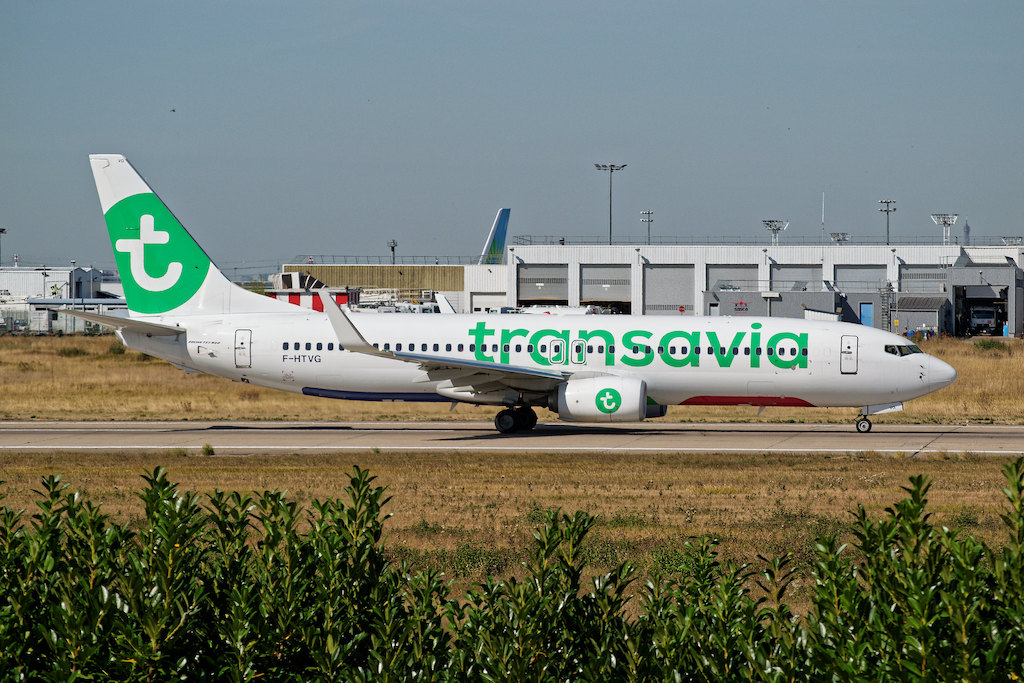Air France-KLM Budget Arm Transavia Is Leading the Group's Recovery

Photo Credit: Transavia is leading Air France-KLM's recovery. Flickr / Dylan Agbagni (CC0)
Transavia was far and away the leader at Air France-KLM in the third quarter. The discount subsidiary produced margins near 2019 levels and is set to grow beyond its pre-crisis scope next year as the group looks to a continued recovery.
Transavia in the Netherlands and Transavia France together reported an operating profit of €105 million ($122 million) in the third quarter, and a 20 percent margin that was "approaching" levels last seen two years ago, as Air France-KLM CEO Ben Smith put it during the group's third-quarter earnings call on Friday. That result exceeded every other business segment in the group — including cargo that has been a bright spot through the crisis — by double digits.
The performance of Air France-KLM's budget arm exemplifies the strength of leisure travel in the recovery. Both of Transavia's operations pivoted to flying more leisure-oriented routes, particularly to Greece, Portugal, and Spain, as intra-European travel reopened to those with their Covid-19 jabs in the third quarter. That shift produced a "great result," said Group Chief Financial Officer Steven Zaat, and contributed to the 2019-level financials on just 85 percent of the capacity.
“This to me is proof that the vaccinated travel policy of the EU is working and boost[s] our demand," Zaat said of Transavia's third-quarter performance.
Other European discounters have made similar moves. Eurowings, EasyJet, Ryanair and Wizz Air all boosted flights to leisure destinations in Greece, Portugal, and Spain by, for the most part, double digits in August compared to the month before, according to Cirium schedules. While they still flew less capacity to these countries compared with 2019 — Wizz Air was the lone exception — it was down far less than their systemwide reductions.
Air France-KLM will continue to grow Transavia France in 2022. The airline will become its dominant operator in the domestic French market and particularly at Paris Orly where it is replacing Hop, which has been integrated into Air France. Transavia France will add 13 Boeing 737s to the 48 it flew at the end of September for 61 by Summer 2022. Prior to the crisis, the discounter operated 40 737s.
Current plans call for Transavia to recover to 2019 capacity levels next year, and Transavia France to grow along with its fleet expansion.
There was little from executives on the campaign for up to 160 next generation narrowbodies that will replace and grow KLM and Transavia's fleet of 136 737s. Air France-KLM is considering both the Airbus A320neo and 737 Max families for the order.
Outside of Europe, Air France-KLM saw an "incredible" increase in transatlantic demand following the announcement that the U.S. reopen to vaccinated travelers, said Smith. The change will occur on November 8 and is widely expected to be a boon to year-end holiday bookings as Europeans travelers take long-delayed trips. However, Smith cautioned that it is too early to say whether the demand that is comparable to 2019 levels will be sustained into 2022 after the holidays pass.
The network carriers also benefit from the uptick in premium leisure travel — or holidaygoers who fly in the first, business, or premium economy cabins — that several airlines have reported. Prior to the crisis, half of premium flyers on Air France and KLM were already traveling for leisure, and the group expects this percentage to increase in the recovery, Smith said. Air France also benefits from its Paris base being one the largest leisure destinations in Europe. However, to adjust for potential fluctuations in premium demand, Air France is adding "quick change" cabin capabilities to all of its widebody aircraft in order to quickly adjust premium seat layouts.
Executives said little about the business travel recovery, a segment that Air France-KLM and many of its legacy competitors rely on for their financial future. Smith only said that leisure travelers continue to return at a faster pace than their corporate counterparts.
In terms of its balance sheet, Air France-KLM has reached terms with its lenders to repay the €4 billion in state aid it received from the French government. Instead of a bullet maturity in 2023, the group will repay €500 million in the "coming weeks," another €800 million in May 2023, and a further €1.3 billion in both May 2024 and 2025, said Zaat.
The group had €10.4 billion in cash or available borrowing capacity at the end of September. This is ample liquidity to get the carrier through the recovery and repair its balance sheet, said Zaat.
Air France-KLM posted a €192 million net loss in the third quarter. Earnings before interest, taxes, depreciation and amortization (EBITDA) at €796 million was positive for the first time since the crisis began, though it was half of what it was in 2019. Revenues decreased 40 percent to €4.6 billion year-over-two-years. Air France-KLM's operating margin was 2.9 percent, and the group flew 66 percent of 2019 capacity.
"We will be EBITDA positive for the full year," Zaat said, forecasting a positive number in the fourth quarter. The group plans to fly 70-75 percent of the capacity it flew two years ago during the period.
In 2022, capacity at KLM could recover to 2019 levels and Air France to 90 percent of three years ago by the middle of the year based on current plans, Smith said. Both forecasts are dependent on demand and the reopening of more Asian countries that have lagged behind Europe and North America.
